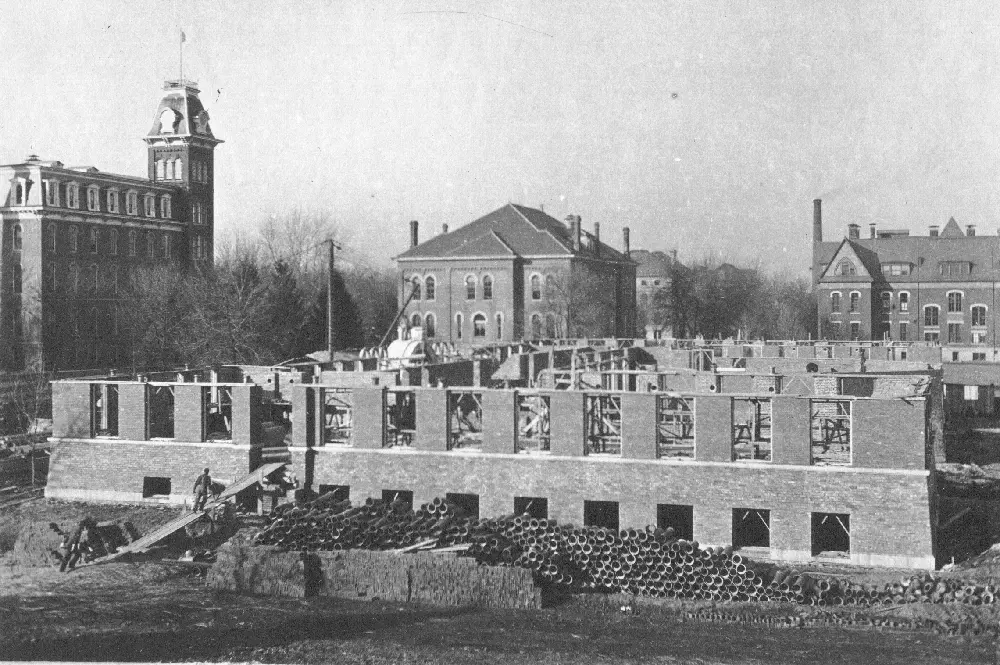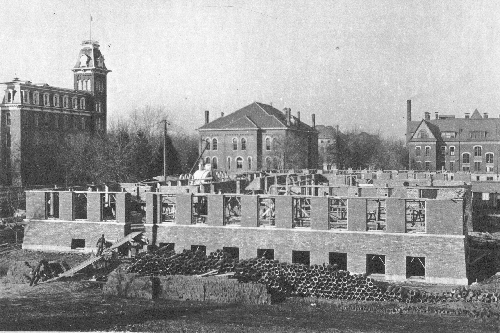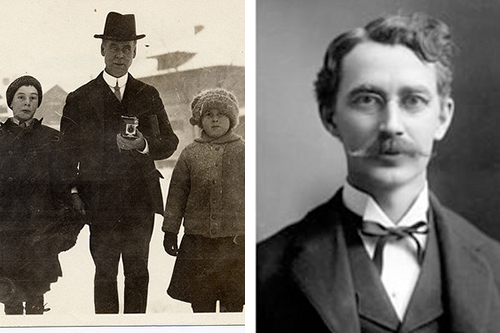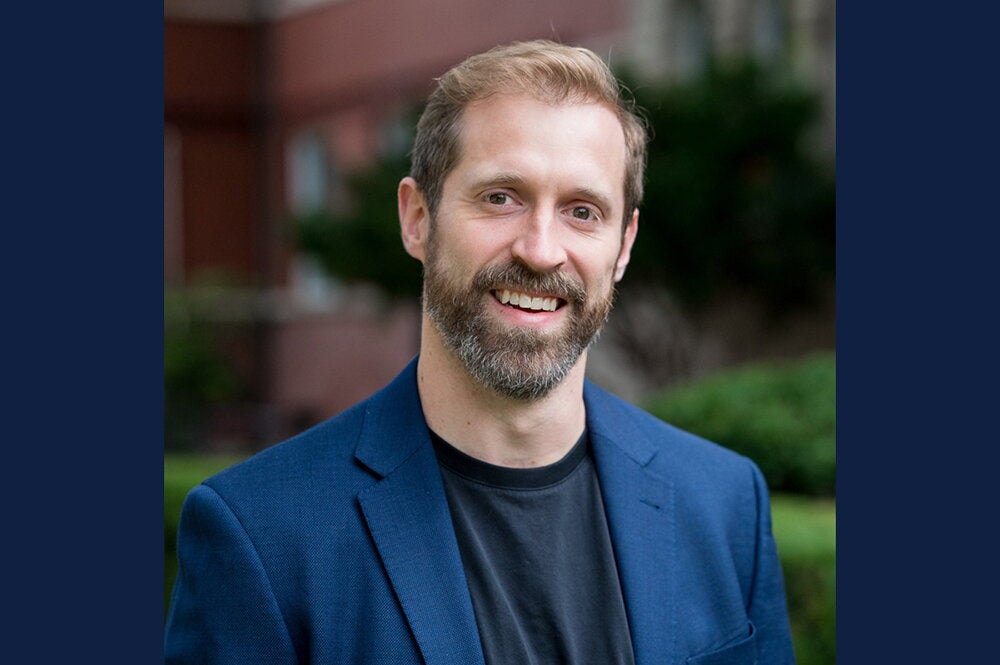

Sometimes the spark for something great is literally a spark. In August 1896 a thunderstorm rolled across east central Illinois and unleashed a lightning bolt on the roof of the U of I’s Chemical Laboratory, with the resulting fire destroying much of the building. Out of the ashes rose one of the most renowned chemistry buildings in the field: Noyes Laboratory.
The nearly 120 year-old building needs little introduction for those in chemistry. Noyes is a mark of American scientific achievement, with 12 former students and faculty members who worked in the building eventually earning the Nobel Prize. Within its walls chemists have pioneered discoveries, helped vanquish disease, and provided the materials and ideas necessary to win world wars. In 2002, the building was named a National Historic Chemical Landmark.
Its history is far from over. As occupants of the building like to say, there’s always something new happening in Noyes. Greg Girolami, former department head, said that over the years Noyes evolved from a research and teaching facility to being primarily focused on teaching. That trend away from research recently reversed itself, however, when in 2016 it became home for the Center for Theoretical Chemistry. Noyes Laboratory’s colorful past, however, is at the root of much that occurs there today.

We’ll get to William Noyes, namesake for the building, momentarily. The story of Noyes Laboratory starts with Arthur Palmer, the indefatigable head of the Department of Chemistry who served during the 1896 fire. After the disaster, Palmer presided over a rebuilding of the Chemical Laboratory (now Harker Hall) and led a years-long fight for a new building.
Palmer was a driven and principled scientist. A specialist on arsenic, he founded the Illinois State Water Survey to enable the department to help the state, according to Girolami. Many Illinois residents at the time drank surface and well water, and waterborne disease was common. A typhoid fever outbreak in 1891 killed some 2,000 people in Chicago. As noted by late campus historian Winton Solberg, after the 1896 fire Palmer picked through the ashes to recover documents and research findings, and for the rest of his life, in addition to his own research, he wrote annual reports on the Water Survey’s activities to improve water quality in Illinois.
Palmer expanded academic programs for the then-growing field of physical chemistry. In the face of rapid industrialization, the department trained more future chemistry teachers, analysts, managers, and superintendents than ever before. At times Palmer despaired that they would never get a new building, but finally in 1901 the College of Science (which later became part of the College of LAS) declared the Chemical Laboratory “a disgrace” and the New Chemical Laboratory was built by 1902.

Palmer died just a couple of years later, at age 43. It’s recorded in department history that he died of overwork. L.P. Breckenridge, a professor of mechanical engineering, recalled at Palmer’s memorial service how the department head beamed upon learning the New Chemical Laboratory would be built.
“It hardly seems possible that it is true,” Palmer said.
The university launched a search for a new department head, and President Edmund James eventually found in Baltimore, at Johns Hopkins University, a prolific chemist named William Noyes. Noyes had grown up on the Iowa prairie, learning Greek while he plowed the fields and doing chemistry experiments with items obtained from the village apothecary, according to a biography written by the U of I chemist Roger Adams. He graduated from Grinnell College and went on to earn his PhD from Johns Hopkins in 1 ½ years, performing water analyses to pay his student expenses. He would later earn the Priestley Medal, one of the highest honors for a chemist.
By the time James found him, Noyes was already well into a successful career, but after some hesitation Noyes came to U of I in 1907. Over the next 19 years he led the department through an amazing period of growth, with the ranks of faculty, staff, and students growing dramatically. By 1926, when Noyes retired, the department was publishing an average of 44 papers per year, up from 15 per year when he first joined the university.
Noyes was a beloved figure on campus. Known for a serious, meticulous, sympathetic, and helpful manner, he inspired productivity and respect within the department. He was often spotted riding around town with his family in a two-seat coach pulled by a pony named Teddy, after President Theodore Roosevelt.
“The reputation of Illinois chemistry, the vigorous atmosphere for progress which he inspired, and his traditionally friendly attitude toward the growing staff will always remain as his lasting contributions to the University of Illinois and American chemistry,” Adams wrote in his National Academy of Sciences biography of Noyes, in 1952.
In 1939, two years before Noyes died, the New Chemical Laboratory (which was expanded to its current size in 1916) was renamed Noyes Laboratory.
“So long as the university stands, the name of Professor Noyes will remain among its immortals,” said M.T. McClure, dean of the College of LAS at the time, “among those who have devoted themselves to the mystery of the mechanism of nature.”


